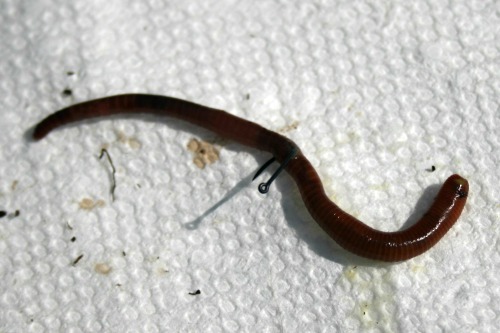Red Wiggler Express: Reliable and Trusted Worm Delivery Services
Red Wiggler Express: Reliable and Trusted Worm Delivery Services
Blog Article
Open the Secrets of Red Wigglers: Your Guide to Composting Success
The integration of red wigglers right into composting techniques presents a substantial opportunity for improving dirt health and advertising sustainability. These organisms are not just efficient recyclers of organic waste; they supply a myriad of benefits that can change garden monitoring. Recognizing their needs and behaviors is crucial for enhancing their potential, from establishing up a proper worm container to feeding them the ideal products. As we discover the vital components of effective vermicomposting, one might question exactly how these tiny animals can result in a more dynamic and productive yard community.

What Are Red Wigglers?
(Lake Hickory Bait)Red wigglers, scientifically known as Eisenia fetida, are a species of earthworm mostly used in composting due to their remarkable ability to decay natural matter efficiently. These worms are characterized by their reddish-brown pigmentation and a fractional body, commonly gauging in between 3 to 4 inches in size. Unlike various other earthworm varieties, red wigglers prosper in rich, organic environments, making them perfect for vermicomposting systems.
Belonging To North America, they are often located in rotting leaves and compost heap, where they play an important role in nutrient recycling. Their adjustment to staying in a damp, cardio atmosphere enables them to consume large quantities of organic waste, simplifying right into nutrient-rich castings that improve dirt health and wellness.
Red wigglers reproduce swiftly, with a solitary worm qualified of producing several cocoons each week, each having several hatchlings. Recognizing the biology and behavior of red wigglers is crucial for maximizing their potential in composting applications.
Advantages of Making Use Of Red Wigglers
Taking advantage of the power of red wigglers in composting offers many advantages that enhance dirt health and wellness and promote sustainable waste monitoring. These amazing microorganisms efficiently damage down raw material, changing kitchen area scraps and backyard waste right into nutrient-rich vermicompost. This finished product is remarkably advantageous for plant development, as it boosts soil structure, raises dampness retention, and enhances nutrition schedule.

(Red Wiggler Express)Furthermore, the existence of red wigglers in your composting system can increase the composting procedure, generating high-quality garden compost in a portion of the time compared to conventional techniques. The castings created by these worms are also brimming with helpful microbes that even more enrich the soil ecological community.
Establishing Your Worm Bin
Creating an effective worm bin is a straightforward procedure that can considerably enhance your composting initiatives. Worm containers can be made from plastic storage containers, wooden boxes, or readily readily available worm bins.
Following, prepare the bedding material, which serves as the worms' habitat. A mix of shredded paper, cardboard, and coconut coir functions well, giving a comfortable setting for the worms.

Feeding Your Red Wigglers
To make sure the health and performance of your red wigglers, it is essential to give them with a balanced diet that satisfies their nutritional demands. Red wigglers flourish on a diverse variety of organic products, which not only provide needed nutrients but additionally promote reliable a fantastic read composting.
Begin by including cooking area scraps such as vegetable peels, fruit cores, and coffee premises. Prevent citrus fruits, onions, and garlic, as these can be detrimental to worm health and wellness. Furthermore, present shredded paper, cardboard, and dry fallen leaves to create a well-aerated setting.
Feeding frequency need to be kept an eye on; typically, worms can eat half their body weight in food weekly. It is vital to avoid overfeeding, as excess food can bring about unpleasant smells and draw in pests. A great practice is to include food in small quantities, allowing worms to refine it before presenting much more.
Maintaining moisture degrees is additionally important; the bed linens ought to perspire yet not soggy. Be certain to routinely inspect the temperature level and pH levels of the container to make certain an optimal atmosphere for your red wigglers, inevitably enhancing their composting performance.
Harvesting and Utilizing Garden Compost
An effective composting procedure with red wigglers finishes in the rich, dark compost understood as vermicompost, which can dramatically enhance soil health and plant development. Harvesting this nutrient-dense product usually takes place every 3 to 6 months, relying on the dimension of your system and the quantity of natural issue being refined.
To harvest, carefully different the garden compost from the worms and any type of undecomposed materials. One effective approach entails relocating the components of the bin away and including fresh bed linens and food to the void, urging the worms to move. After a couple of days, the compost can be gathered from the contrary side.
It is important to make use of vermicompost appropriately to optimize its benefits. By including vermicompost right into your horticulture program, you not just reuse natural waste yet likewise develop a successful ecosystem that supports sustainable gardening techniques.
Final Thought
In summary, red wigglers serve as extraordinary allies in composting efforts, transforming organic waste into nutrient-rich vermicompost. By comprehending the ideal conditions for their habitat, feeding requirements, and compost harvesting techniques, garden enthusiasts can enhance soil health and promote plant vitality.
Report this page